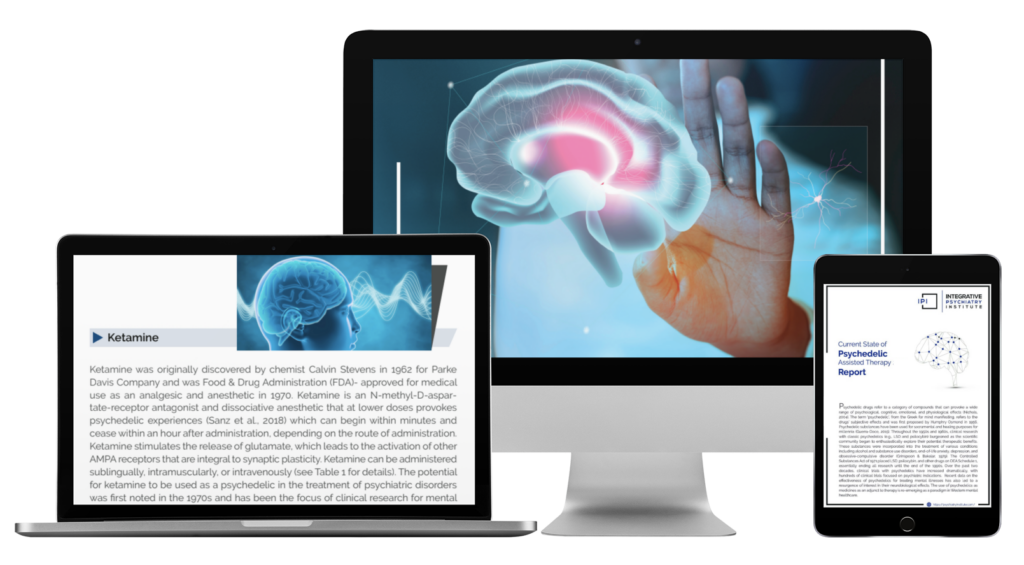Why are we using organic acids?
Watch our video entitled “Organic Acid Testing” as Dr. Mary Rondeau talks about organic acids, gut dysbiosis and other topics as to why we should treat our gut first.
FULL TRANSCRIPT
So, the question to start off with this is like, why are we using organic acids? One of the big components of the Integrative Psychiatry Institute is to really bring together this disconnect – that the body cannot be separated from the mind. But we are treating mental health and the organic acids test is one tool that is really good at assessing kind of the neck down metabolic issues. And so, I just love this cartoon, because I think it really speaks to the current state of treating mental health and how we are looking to shift that.
Organic Acid Tests
- Malabsorption markers
- Dysbiosis markers
- Mitochondrial function
Organic acids basically give you a functional assessment of multiple different metabolic areas. One being antioxidant status in the body, relative need for B vitamins or B vitamin deficiencies. You get some information on mineral deficiencies and amino acids. It has a section that marks for malabsorption markers. So, we’re looking at gut dysbiosis. How well is somebody absorbing food that they’re eating, as well as is there a component of elevated yeast or bacterial markers that might be contributing to the gut-brain axis and interrupting that in the context of mental health?
It’s helpful if a person has a combination of gut symptoms and mood symptoms, that this could be a really important test to give you more clues on treatment options. Depression or mood disorders that have a high fatigue component, that can be relating a lot to nutritional deficiencies, mitochondrial dysfunction, and methylation dysfunction.
If there’s been a history of chronic fatigue, or chronic fatigue syndrome, chronic infections, again, really assessing those biochemical pathways can be really helpful. And fibromyalgia would be kind of top areas that you can look at if those are going on, in addition to mood symptoms, that this test would be a good choice.
Additional Considerations: Bacterial Dysbiosis.
Diet cannot be emphasized enough, we’re going to continue to push high fiber and then the low sugar, low carbohydrates, diets rich in polyphenols, anything that gives us bright, beautiful colors are going to be really helpful in terms of boosting up the more healthy counts, especially the bifido counts of bacteria. Those are found in your fruits, veggies, your seeds and wine. And remember your fruit skins, your veggies, and your seeds are also an excellent source of fiber. So, you kind of get two birds in one stone with those dietary recommendations. The Mediterranean diet is another good option. There was a study done showing that the Mediterranean diet did help increase the healthy counts and the diversity of the bacteria in the digestive tract. So, a Mediterranean diet is good.
Additional Tips for Successful Implementation
Always treat the gut first. It’s kind of like our cardinal rule, right?
A lot of diseases begin in the gut. We’re exploring that gut-brain axis in terms of how that’s affecting mental health, so hone in on the gut.
If the gut is abnormal, treat it. Is it yeast? Is it bacterial? Is it both? Treat that.
Then after that’s done, the next phase of treatment plan is to say:
What is more predominant?
Is it more mitochondrial dysfunction?
Is it methylation concerns?
Is it just across the board deficiencies in nutrients?
Then prioritize that.
This way, the treatment plans do not become overwhelming and you can see exactly what is doing what. You started a gut treatment plan at the same time that you started them on high dose B vitamins, and you’re doing CoQ10, and you’ve just given somebody six or seven different supplements targeting spots around the whole organic acid test. They aggravate. What did they aggravate from? We don’t know. And so, you know, and if they got better, what did they get better from? We don’t know, we don’t want somebody having to take this many things forever.
So, I really recommend that, you know, a good tip for implementing this is to go section by section and just kind of move through this.







